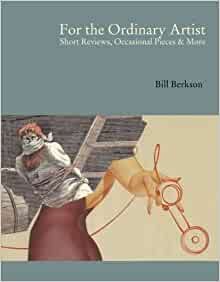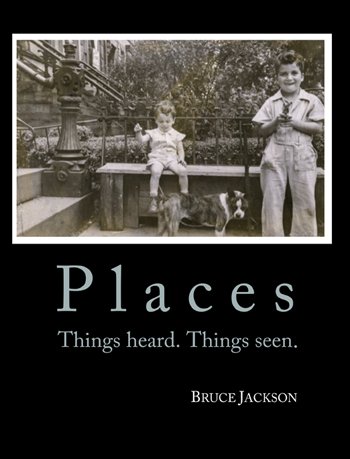Martha King’s fascinating memoir bristles with a unique kinetics of purpose, struggle, reluctant parents, loyal friendships, and of a lifelong partnership with brilliant artist Basil King forged in a utopian dream of communality and the powers of alternative art praxis and passionate bohemian life. What a headstrong young woman she was taking off to Black Mountain upon receiving a note from then rector Charles Olson to “Come with all the money you have and what you are used to for cooking.” And what a long life that continues unabated! Indeed this book is a way of seeing with others in and out of place in the maelstrom of heady American art and poetry life. I think of Clifford Geertz’s terms “consociational”: all the bustling intersecting realities and persons and the work itself that makes such a grand fabric and warm salute to an amazing time in our culture’s complicated relationship to its geniuses.
I couldn’t put OUTSIDE/INSIDE down until way after dawn, captured by King’s patience, and the urgent “call” to tell this palpable art-driven love story, an archive of trenchant and luminous particulars. —Anne Waldman
I've just finished with this splendid memoir. It has so much life to it, and brio, and so much deeply felt reflection that I'm hooked. I loved hearing about everything! The picture of San Francisco life at a certain moment in the mid-fifties has not been equaled elsewhere...but the Lucia Berlin chapter was to me the emblem of all the rest—a long look, with a hundred cunningly observed details, that builds to an heroic thesis. —Kevin Killian
Martha King’s writing brims with a forward propulsion that makes her memoir a page-turner, until you deliberately slow down to relish many passages. You end up appreciating a well-lived life, even if you are not familiar with all of its characters. She says early on that she, perhaps unfashionably for today, lived/lives a life (partly) in support of her partner rather than in self-focused exploration. That’s not something to criticize when her partner, painter-poet Basil King, manifests an integrity that earns any support for it. Besides, hindsight shows that Martha ends up fulfilling her own potential as a poet and writer. The very last word of the memoir sums up Martha’s life — it is a word worth discovering in a book worth reading for her definition. —Eileen R. Tabios
Here it is, kids, the Martha King chronicles. An insider’s account of the real late Black Mountain College, starting with Charles Olson’s enigmatic but clearly motivated postcard: “Come with what money you have in hand and what you are used to for cooking.” The trip stretches wide and far but comes home to a real sense of living. And living for art. Eventually, and then always, with partner in crime and much else, painter and poet Basil King. She gives us what we really want and need — textures: “rotting mattresses, worn-out boots…” She tells what radical women’s lives were like, they “…improvised their clothing, cooked exotic peasant food, tied nursing babies to their waists with Mexican scarves.” She cuts to the essential: “Black Mountain is important because it grew a language – in collision – that is still available for use.” She gives us close-up accounts of goings on inside the Cedar Street Tavern. Denizens, avatars, pass through and by: John Wieners, Frank O’Hara, Hettie Jones, Bob Thompson, Paul Blackburn. And then she goes beyond that, all the way to the present. King clarifies, edifies, entertains. She gives the reader all that freely, and the reader is duly gratified. —Vincent Katz
Martha King’s lively, always insightful memoir provides an intimate account of not only the artists and writers constellated around Black Mountain College in the 1950s but the evolution of many of its figures—famous ones like Charles Olson and John Wieners as well as those less so—while the scenery changes from San Francisco to the East Village, from the ragged clapboards at Black Mountain to the Park Avenue apartments of art dealers. Against the backdrop of her proper Southern upbringing King charts her sentimental education, one done in the company of her husband Basil King, with both eye and ear attuned to the urgent disputes and minor key joys that animate the ordinary days of poets and painters. By turns a family remembrance, a gossipy tale, a love story, and a bildungsroman, Outside/Inside gives vivid account of lives lived in pursuit of making. —Al Mobilio
The book is an incredible picture of life in the art/writing scene over that period. A great picture too of New York. I'd been reading part of Edmund Wilson's diaries which gives a detailed account of the city some thirty years [earlier]. Martha King's account is just as sharp and dense with detail....it's the period just before the money people completely took over. I like the take on the sixties counter-culture, its naivety in being part of the advance of capitalism without knowing it. And I think that what is says about women in that period (or now for that matter) is absolutely on the money. —Laurie Duggan
Martha King was there, and her book is a testimony to the moment when modernism transitioned into contemporary poetry and painting. From Black Mountain to Frank O'Hara and James Rosenquist, she and her husband, the much accomplished and respected painter and writer Basil King, were there, and the result is a personal and detailed guide to a critical moment in the history of the American arts. This is an essential book. Don't miss it. —Edward Foster
Martha King was born Martha Winston Davis in Charlottes-ville,Virginia, in 1937. She attended Black Mountain College for three months as a teenager, and married the painter Basil King in 1958. They have two daughters and four grandchildren. Before retiring from day jobs in 2011, Martha worked as an editor and science writer. She also edited 2+2 chapbooks with Susan Sherman in the late 1970s and published 31 issues of Giants PlayWell in the Drizzle, 1983-1992. Currently she co-curates a long-running prose reading series with Elinor Nauen at the SideWalk Café on the Lower East Side. For more information, see basilking.net.
Book Information:
· Paperback: 476 pages
· Binding: Perfect-Bound
· Publisher: BlazeVOX [books]
· ISBN: 978-1-60964-314-0





